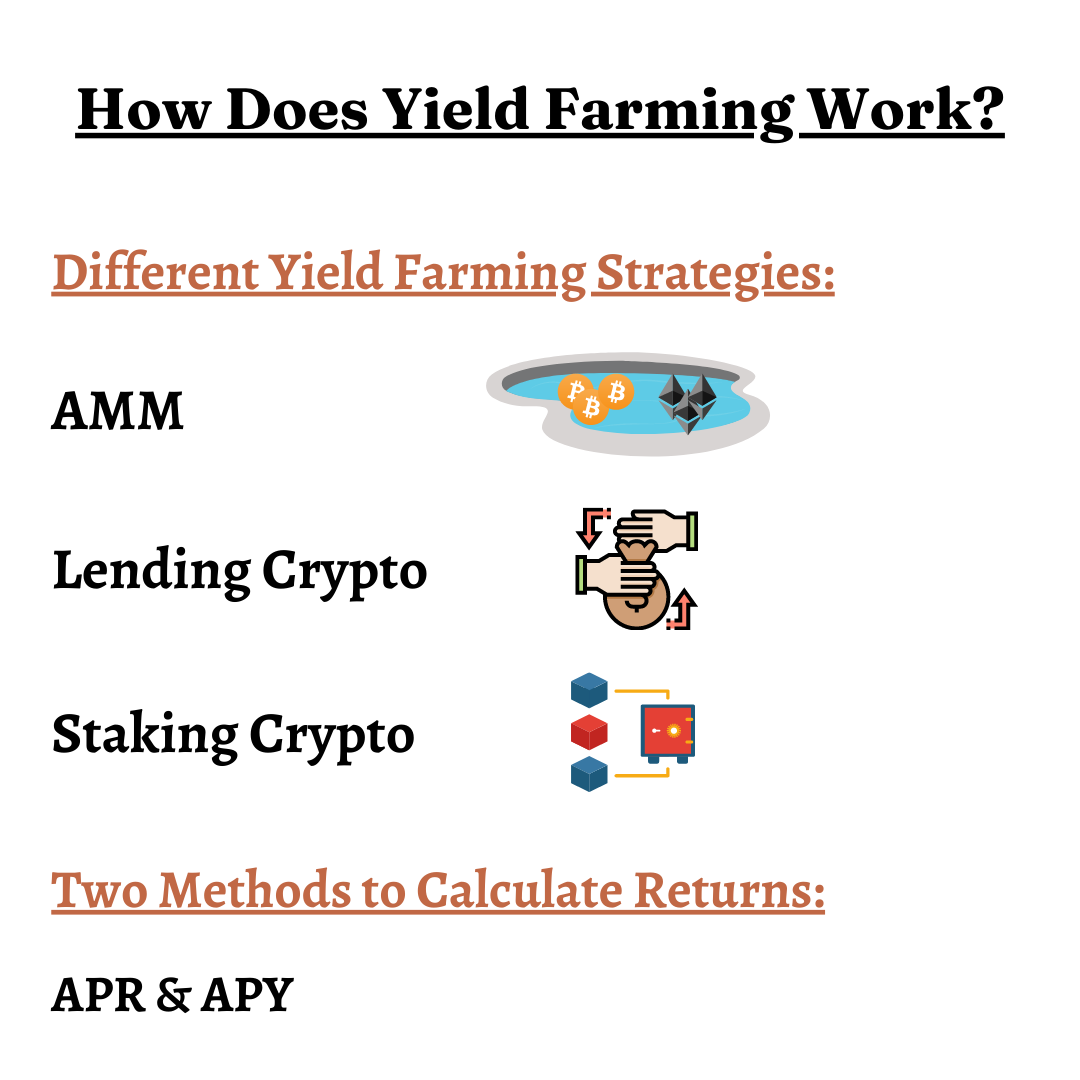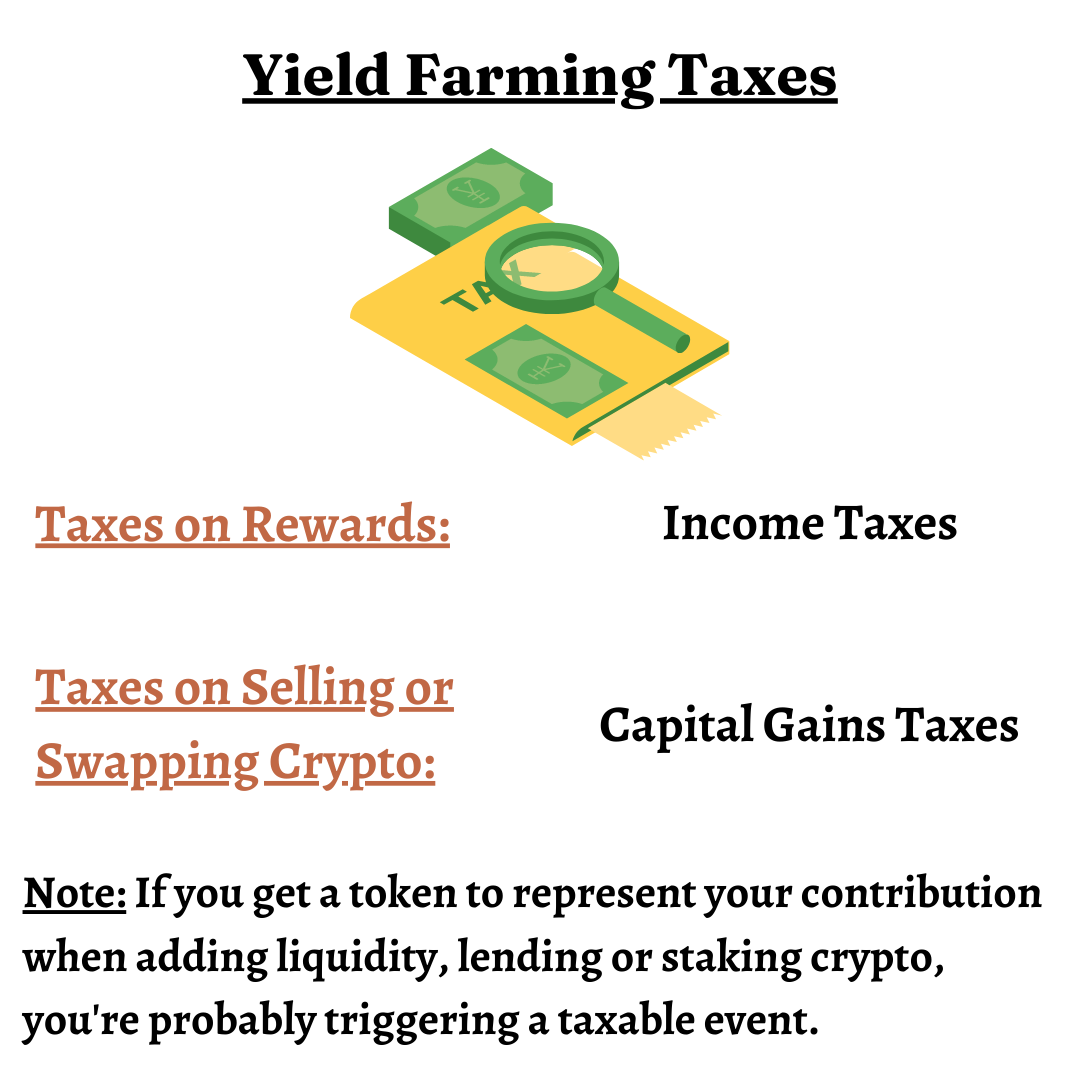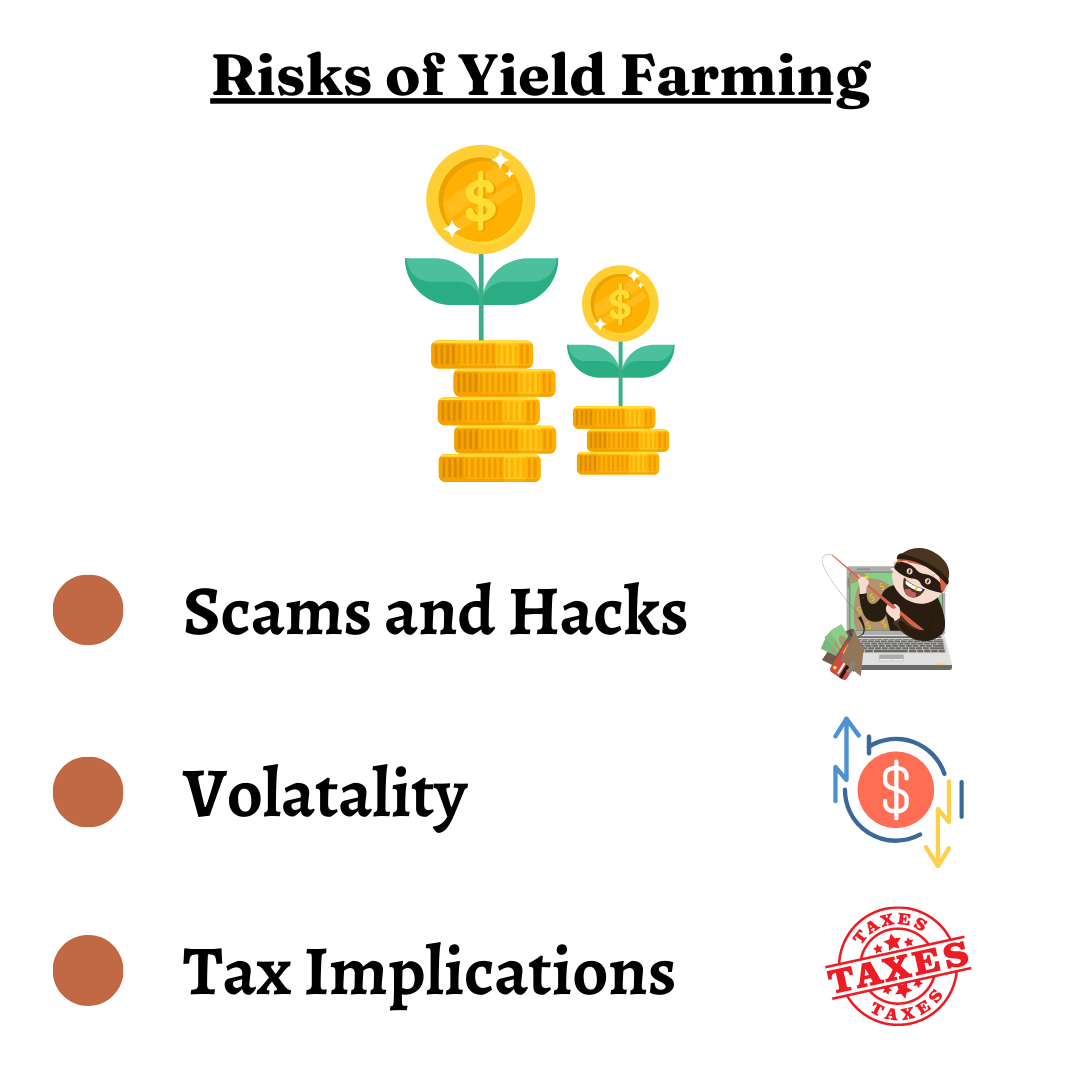Yield Farming Taxes – The Basics you Must Know
The same rules apply to yield farming taxes, which apply to basic cryptocurrency transactions.
You pay income taxes on rewards received from yield farming and capital gains taxes on selling or swapping cryptocurrency. Or at least, that’s how it works in theory. In practical reality, it’s much more complex than that.
In this article, you’ll find out:
- What is yield farming, and how does it work?
- How does yield farming taxes work?
- Risks of yield farming.
So, let’s get started.
What is Yield Farming?
Yield farming allows you to put your crypto to work to earn passive income that would otherwise sit idle in your wallet. So, instead of HODLing your crypto, you can make more with them.
There are many ways you can put your crypto to work to earn passive income that we’ll discuss in the next section. But on the surface, this is how yield farming works –
You lend or stake your crypto in a protocol and, in return, receive rewards.
That’s the simple version. Some people go one step further and deploy much more complex farming strategies to earn the highest returns on their crypto.
Yield farmers are usually very secretive about the platforms and protocols they’re using to earn returns.
Why?
Because the more people join a particular protocol, the less return you earn.
As you can imagine, finding new and up-and-coming projects to invest your crypto in also exposes you to countless scams and rug pulls.
Other than that, every platform works differently, resulting in different ways to interpret yield farming taxes.
How Does Yield Farming Work?

All the following different methods of yield farming you’re about to see all work with the help of smart contracts – self-executing tasks or contracts set in code.
AMM (Automated Market Makers) – AMM is what decentralized exchanges use to create liquidity to make trading possible.
It’s pretty simple. You, the liquidity provider, will provide liquidity in pairs of cryptocurrencies in return for a share of the platform’s trading fees.
Here’s how liquidity pools work.
Lending Crypto – Lending crypto works the same way traditional loans do. The only difference is there are no third parties involved. You lend your crypto and, in return, receive interest on the loan.
Staking Crypto – You can read all about DeFi staking and how it works.
But on the surface, here’s what you need to know –
There are two ways to verify transactions in a blockchain – Proof-of-Work (PoS) and Proof-of-Stake (PoS).
The validating capacity of a PoS-based protocol depends on how much crypto is staked in the network.
So, you stake your crypto in a PoS protocol, like Ethereum, that helps the network function, and as a reward for your contribution, you receive more crypto.
These are mainly the three ways you can earn from yield farming. Of course, there are many risks associated with these methods, and we’ll talk more about them later in this article.
How do you calculate the returns?
The only two ways to calculate returns – APR (Annual Percentage Returns) and APY (Annual Percentage Yield).
Unfortunately, neither one of these two methods are suitable for finding the true estimates.
Why?
Well, because crypto is highly volatile. So, any estimate you calculate with these methods will be inaccurate.
Maybe, the market was bullish when you estimated the returns, but halfway through, the market drops, and so do your returns, resulting in you losing money. On top of all this, add yield farming taxes, and you may realize that you’re actually losing more than you earn.
Or the protocol on which you put your crypto in gets crowded, and returns drop significantly.
Long story short, until a better model for calculating returns comes around, be extremely cautious with your investment decisions.
Yield Farming Taxes

On the surface, yield farming taxes look pretty straightforward.
If you receive rewards from staking, lending or providing liquidity to a platform or protocol, you’ll be liable for income taxes.
On the other hand, if you sell, swap or spend your crypto, you’ll be liable for capital gains taxes.
The complications start when you realize that every time you’re adding liquidity in a pool or staking your crypto in return for a token representing your contribution, you’re essentially disposing of your crypto, triggering a taxable event.
So, every time you do that, you’ll incur capital gains (or losses).
Whether the IRS views this as a taxable event or not isn’t clear, but based on existing guidelines, it seems to be the case.
At the same time, some platforms allow you to still maintain the ownership of your crypto, despite swapping it for a different token. So, it all depends on the platform and the underlying smart contract.
Plus, we haven’t even touched on leveraged yield farming, which is a much more complex yielding strategy and results in much more complex yield farming taxes.
So, if you intend to really do yield farming, consider using Bitcoin.Tax, a tax crypto tax calculator. It’ll automatically track all your transactions and income, calculate taxes and create a tax report. It’ll save you a lot of time and effort that you can put into better things.
Risks of Yield Farming

Scams and Hacks
We already mentioned how yield farmers are always looking for new and profitable protocols with the highest returns and how it exposes them to thousands of scams and rug pulls happening daily.
Sometimes, it’s not necessarily a scam that you should be aware of. Some smart contracts have loopholes in them, which hackers can easily exploit. If you put your crypto on a platform that gets hacked, you will lose all your money.
Mainstream protocols and platforms get popular because first, they were not scams, and second, their underlying smart contracts were good enough to survive hackers for a long time, which is what makes them a good choice for their users.
But with new protocols, you don’t know that unless you have extensive knowledge and experience in blockchain technology and smart contracts. Otherwise, it’s very unlikely you’ll identify the signs that point to a potential scam or poor coding.
Volatility
Volatility is a serious issue in yield farming. If the price of the coins you lend or stake dips, you’ll realize an impermanent loss.
It’s called an impermanent loss because you can wait and endure the losses till the prices go back up and you break even. Or you can choose not to risk further losses and opt-out with a loss.
Tax Implications
As we discussed, yield farming taxes can get quite complicated. Other than that, you need to make sure you’re earning enough that it’s worth paying the taxes and the inconvenience of reporting such complex taxes.
Yield Farming Protocols
These are some of the most common and popular platforms for yield farming. We talk about some of these platforms extensively in this list of best liquidity pools.
Uniswap is a decentralized platform that allows trading or token swaps without intermediaries or third parties.
There are many different token pairs and liquidity pools. You can provide liquidity to any one of them to facilitate trades and receive rewards.
Aave is a crypto lending and borrowing platform. Its biggest USP is flash loans that allow users to take instant, unverified, but small loans without any collateral.
MakerDAO allows you to use your crypto as collateral to mint DAI, a stablecoin that you can then use for other yield farming strategies.
Similar to Uniswap, Balancer is also a platform for liquidity pools. The only difference – it allows for custom token allocations in a liquidity pool.
Is Yield Farming Worth it?
Yield farming is definitely worth it, but only if you’re okay with the risk of losing your money and are willing to put in the time and effort in research and learn about the space.
Yield farming offers attractive returns that often make people overlook the risks. It’s up to you to decide if the rewards are worth the risk we discussed.
Also, to make your yield farming taxes easy, use Bitcoin.Tax.